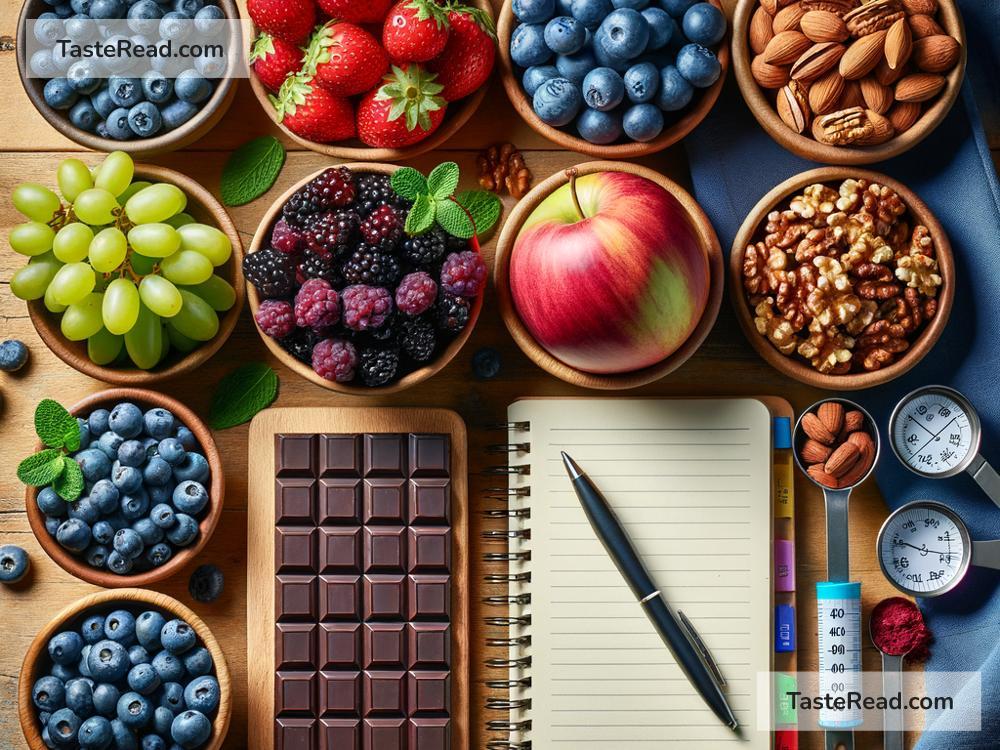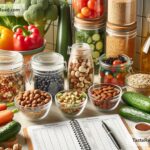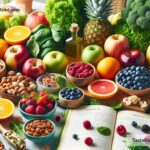How to Plan Meals for Optimal Resveratrol Intake
Resveratrol is a powerful antioxidant that has been linked to several health benefits, such as reducing inflammation, supporting heart health, and protecting against age-related diseases. This natural compound is found in foods like grapes, red wine, blueberries, and peanuts. If you want to increase your resveratrol intake through your diet, the good news is that it’s easy and enjoyable to do! In this blog post, we’ll explore how to plan meals that maximize resveratrol in a simple and practical way.
Why Resveratrol Matters
Before we dive into meal planning, let’s break down why resveratrol is special. This antioxidant helps protect your cells from damage caused by harmful molecules called free radicals. Over time, free radicals can lead to chronic conditions like heart disease, diabetes, and even cancer. Resveratrol also plays a role in reducing inflammation, supporting brain health, and potentially slowing down aging processes.
Since your body doesn’t produce resveratrol naturally, getting it from your diet is key. While supplements are available, food sources are usually safer and more enjoyable. Now, let’s get into how we can plan meals that boost your resveratrol intake.
Step 1: Know Which Foods Contain Resveratrol
To plan meals, you first need to know which foods are naturally high in resveratrol. Below is a list of the top sources:
- Red Grapes: The skins contain high amounts of resveratrol. They can be eaten fresh, added to salads, or blended into smoothies.
- Red Wine: Moderate amounts of red wine can provide resveratrol, though keep portion sizes small to avoid alcohol-related downsides.
- Blueberries: Not only rich in resveratrol but also other antioxidants that support overall health.
- Peanuts and Peanut Butter: Easy to include in snacks and meals.
- Dark Chocolate (at least 70% cocoa): Contains small amounts of resveratrol along with other beneficial compounds.
- Mulberries: A lesser-known fruit but an excellent source of resveratrol.
- Cranberries: Can be used in sauces, smoothies, or eaten dried.
Step 2: Build Balanced Meals Around Resveratrol-Rich Foods
For optimal health, include resveratrol sources in meals that are balanced with protein, healthy fats, and a variety of fruits and vegetables. Here’s how you can plan meals for different times of the day:
Breakfast
Start your day with a resveratrol-rich breakfast that’s easy to make and delicious to eat. Try these ideas:
- Resveratrol Smoothie: Blend red grapes, blueberries, a handful of spinach, a spoonful of peanut butter, and a splash of almond milk.
- Cranberry Oatmeal: Add dried cranberries and a drizzle of honey to warm oats. Top with a few crushed peanuts for added texture.
- Greek Yogurt Bowl: Top plain Greek yogurt with blueberries, granola, and a sprinkle of dark chocolate shavings.
These breakfast options not only boost resveratrol but also provide vitamins, protein, and fiber to keep you energized all morning.
Lunch
For lunch, aim to incorporate more whole foods and fresh veggies. Here are some examples:
- Salad with Red Grapes: Toss mixed greens with sliced red grapes, walnuts, crumbled feta cheese, and a light vinaigrette dressing.
- Peanut Butter Wrap: Spread peanut butter on a whole-grain wrap and add chopped mulberries or dried cranberries.
- Veggie Stir-Fry: Use a side of peanuts and a small portion of brown rice for a satisfying, nutrient-dense lunch.
Feel free to mix and match your favorite ingredients while keeping resveratrol sources as key components.
Snack Ideas
Snacks are a great way to sneak resveratrol into your day. Some quick and easy options include:
- A handful of peanuts or mixed nuts
- Dark chocolate squares paired with fresh blueberries
- Red grapes to munch on during the afternoon
These snacks not only taste great but also help you stay full between meals.
Dinner
Dinner is the perfect time to include hearty dishes with resveratrol-rich ingredients. Here are some ideas to try:
- Grilled Chicken with Grape Salsa: Top cooked chicken with a salsa made of diced red grapes, onion, cilantro, and lime juice.
- Red Wine Risotto: Add a splash of red wine to your risotto recipe (remember, moderation is key).
- Mulberry and Spinach Salad: Serve as a refreshing side dish or main course.
Pair your dinner with a glass of water or herbal tea, and reserve red wine as an occasional treat no more than a few times a week.
Dessert
End your day on a sweet note with resveratrol-filled desserts like:
- Blueberry and Dark Chocolate Bark: Melt dark chocolate and mix in fresh blueberries. Let it cool and harden for a healthy treat.
- Fruit Platter: Arrange a variety of berries, mulberries, and red grapes for a colorful and antioxidant-packed dessert.
Step 3: Don’t Forget Moderation
While resveratrol is good for you, it’s important to enjoy it as part of a balanced diet. Eating too much of one type of food can lead to nutrient imbalances, so make sure your meals include a variety of other fruits, vegetables, and lean proteins.
Also, if you choose to drink red wine for resveratrol, do so in moderation—around one glass per day for women and two glasses per day for men. Too much alcohol can outweigh the benefits of resveratrol.
Final Thoughts
Planning meals for optimal resveratrol intake doesn’t have to be complicated. With some creativity, you can incorporate resveratrol-rich foods into every meal and snack throughout the day. Focus on balance, moderation, and variety to enjoy the health benefits of this powerful antioxidant while nourishing your entire body. Eating well should be both healthy and fun, so try out these ideas and make resveratrol a natural part of your daily routine!


